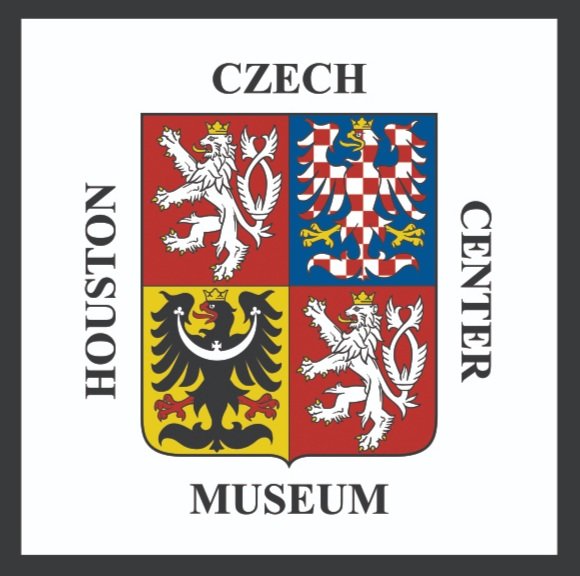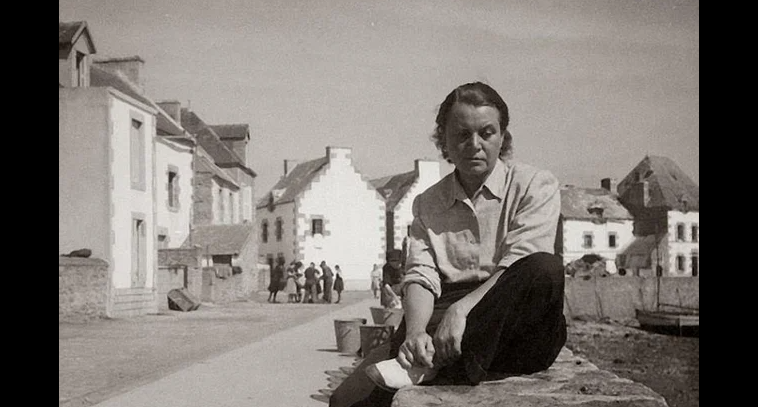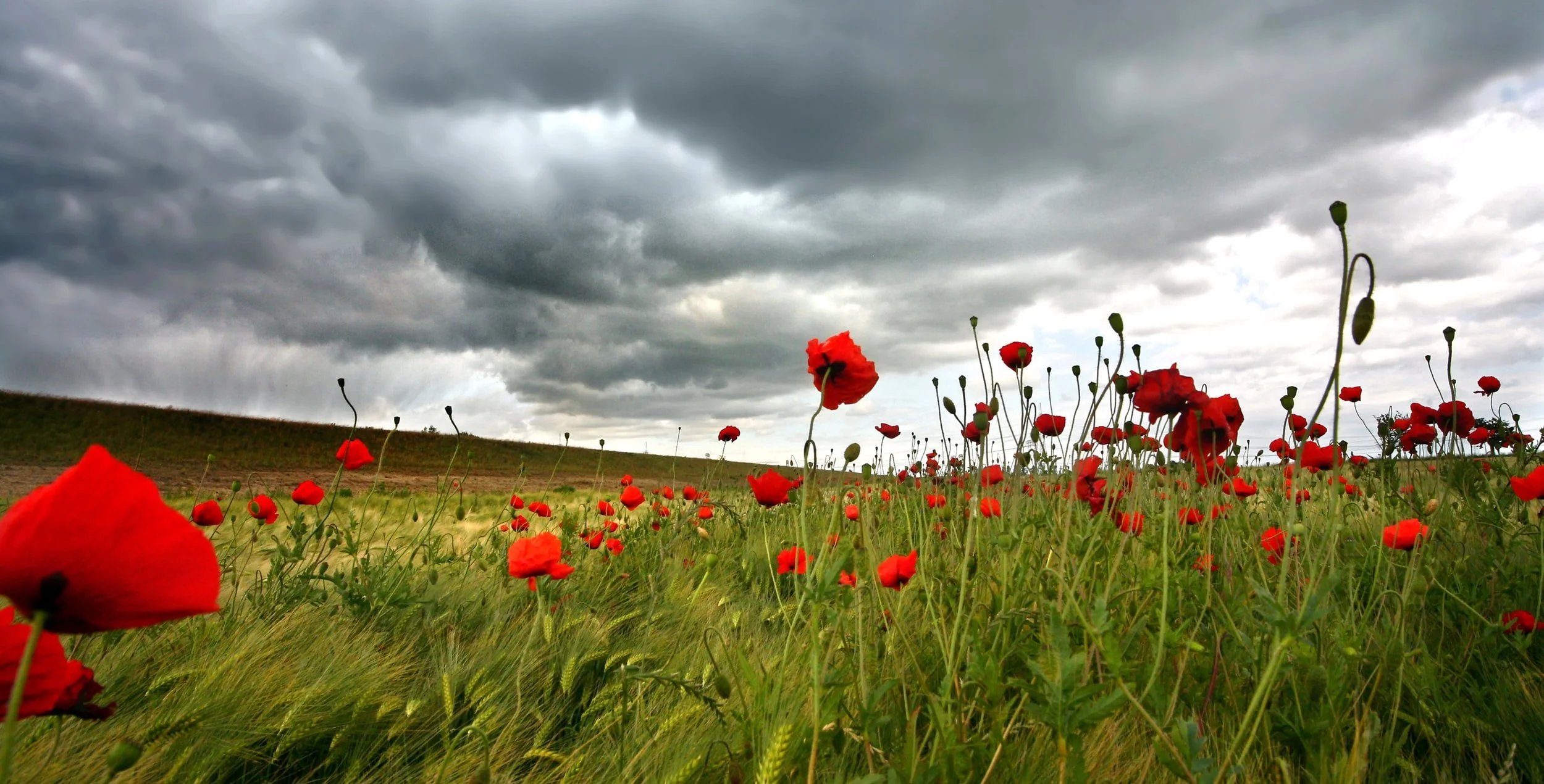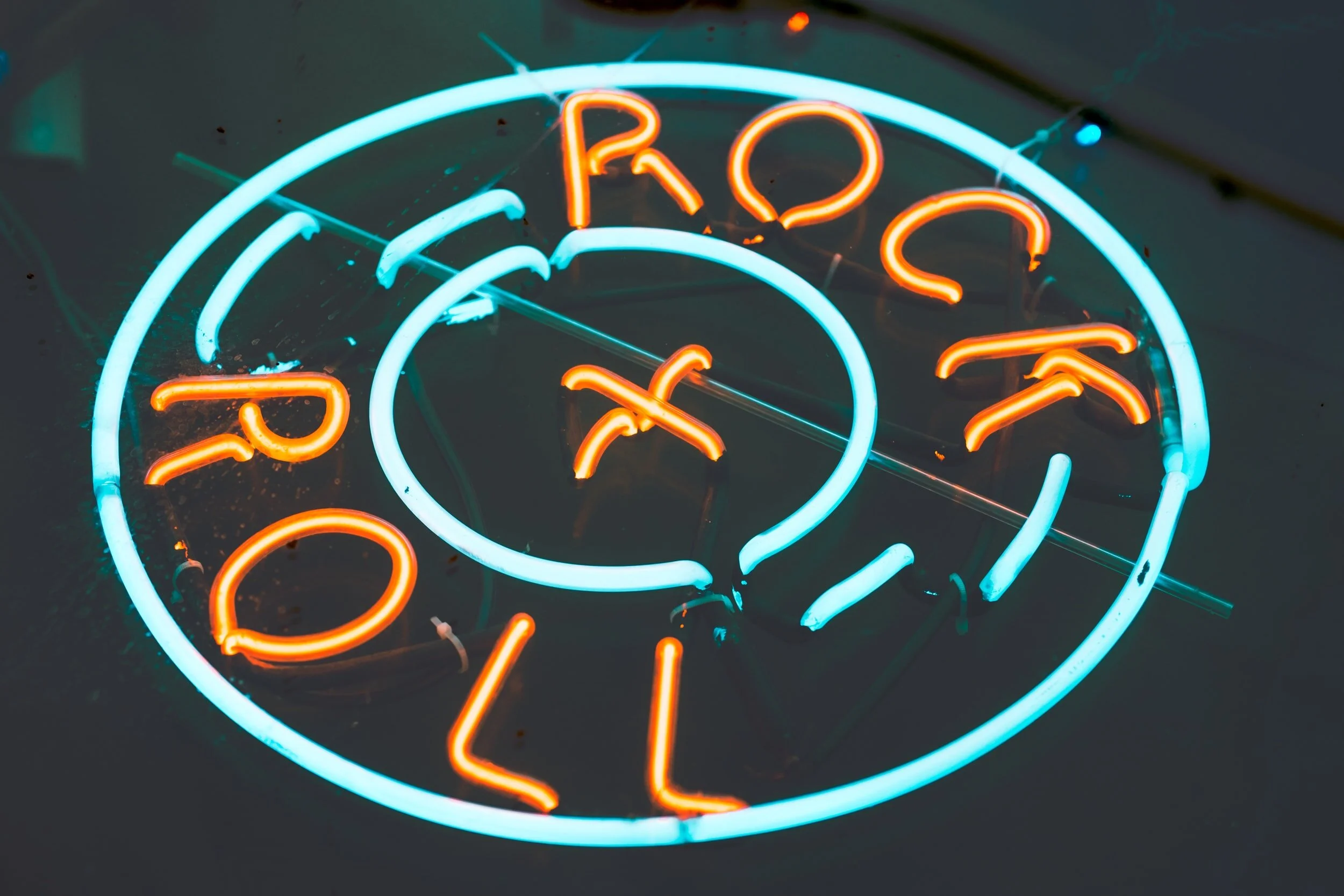Jiří Karásek ze Lvovic was a unique individual, whose name is even somewhat unique. He was fascinated with death as a child and the occult as an adult. He wrote poetry and critique, collected art and co-founded a magazine, the Moderni Revue. When homosexuality was illegal in Czechoslovakia, he was openly gay and was an activist in the LGBT community of the time.
A Progression in Pride: Those Along the Way
In this article, the history of Czech LGBT athletes is examined, with two individual athletes highlighted. The first is Martina Navratilova, a world-renowned tennis player whose won the 1972 Czechoslovak National Championship at the young age of 15. The second is Olympic figure skater Ondrej Nepala, who started his Olympic career in the 1964 Winter Games at the age of 13. Both distinguished athletes advocated for LGBT rights, with Navratilova still doing so to this day.
Assassination of Reinhard Heydrich
"The Butcher of Prague" Reinhard Heydrich established himself as a ruthless authority among the Nazis, terrorizing Eastern Europe. Czechoslovakian president Eduardo Bene ordered a team of assassins to kill Heydrich. These assassins were Josef Gabcik, a former blacksmith and locksmith, and Jan Kubis, both of whom rose up the ranks in the Czech military. Of course there were others, 7, in fact, and if they were successful is written.
Milada Horakova
Milada Horakova was an advocate for democracy, stuck between both the Nazis and Communists for her adult life. During the Nazi occupation of Czechoslovakia, she resisted, helping emigrants escape and harboring fugitives of the occupiers. Although she faced torture and death from the Nazis, she not only survived but also continued her same fight, this time with the Soviets. Sadly, she was sentenced to death and executed, even when eminent individuals of the time demanded her release.
Jana Novotná: Czech Tennis Champion (1968-2017)
Love, Dad
Diana Cam Van Nguyen, up-and-coming Vietnamese-Czech animation director, debuts her animated documentary, "Love, Dad." It centers around an exchange of letters between a daughter and her father. In her film, several animation techniques are used in a fitting manner. Her future as a filmmaker is only beginning, but she's already made international waves!
The Czech Flag: A Century of Waving
Inspired by the American holiday, many nations in the world celebrate Flag Day, including Czechia. Before Czechia, there was Czechoslovakia, whose flag, created in 1918, featured 2 horizontal stripes, white on the top and red on the bottom. The flag changed to include a blue wedge from the left and has remained this way since, including after the separation of Czechoslovakia into the Czech Republic and Slovakia.
Toyen: Czech Surrealist Artist (1902-1980)
Toyen, born Marie Čermínová, was a foundational Czech Surrealist artist who explored gender expression. In her early days, she traveled to Paris where she promoted a poetry-inspired art style called "Artificialism." Her own art explored gender, politics, and eroticism, which challenged viewers. After the Communist takeover of Czechoslovakia, Toyen lived in Paris, creating new, expressive pieces, for the rest of her life.
Pride, Country, and a Balance Beam
Věra Čáslavská was a Czechoslovakian Olympian gymnast, born in May 3, 1942 and raised in Prague. Her sense of pride came from more than her sport, as it centered around her love for Czechoslovakia and her people, such that she signed the Two Thousand Words manifesto during Prague Spring. Even through possible persecution she continued to train for the Olympics. After the Olympics, the persecution continued, but she remained resolute though her life, earning her the love of the Czechoslovakian people.
Mother's Day in Czechia: Charlotte Masaryk
Through history, celebrating Mother’s Day in the Czech Republic was more complicated than one could imagine. It begins with the wife of Tomas Masaryk, Charlotte, who fought for women’s rights and taught her daughter, Alice Masarykova, to do the same. After her mother’s death, Alice established Mother’s Day in 1923. The complications of Mother’s Day lasted for a long time, into Czechoslovakia’s Communist occupation.
Charles IV and the New Town
King of Bohemia, King of the Romans, Holy Roman Emperor. Despite the grand stations he achieved in life, Charles IV never forgot his homeland of Prague. Born to the prestigious Czech Přemyslid dynasty, Charles governed his territories with an attitude well ahead of his contemporaries. As we will see, perhaps too far ahead for the 14th century. In a dance that would become strikingly common two centuries later, he attempted to chip away at the power of the lower nobility and centralize more power around the person of the king. His justification for this seemed more about efficient governance rather than personal conviction about his Divine Right to rule, which contrasts with the later Absolutist monarchs of the Early Modern Period.
The Golden Bull was named after its distinctive gold seal
Efficiency seems to be an important motivating factor for the emperor, as whether he was the King of Bohemia or the Holy Roman Emperor he would pursue a codification of the law codes in his domain and a standardization of the election process in his empire. While only the latter was successful, it would direct imperial jurisprudence for the next four centuries. This decree was known as the Golden Bull, and acted as a codification of both the imperial election process and its constitution as well. Notably, the decree did not require the confirmation of the pope for the new imperial elections, which continued the trend of power shifting to secular rulers rather than religious ones.
Karlštejn Castle
However Charles’ reforms were not purely of the legal variety, as over the course of his long reign he engaged in a number of construction projects. This included multiple castles such as the picturesque Karlštejn Castle, which alone would serve as a testament to his architectural vision and commitment to the protection of his people. However, one of his endeavors would go on to influence not only the lives of his subjects, but set the template for urban planning to come. This would be Prague’s New Town (Nové Město), which if not ingeniously named, was most certainly leaps and bounds ahead of city planning at the time.
Wenceslaus Square
The New Town was a pre-planned expansion of Prague, beginning in 1346, designed to possess wide avenues and plenty of room for growth. When planning the district, Charles made sure to respect the isolated communities that previously occupied the 250 hectares that would make up the New Town. Generously he carried out no demolitions and even factored existing structures into his final layout. The area that would make up this new division was parceled out and offered to the residents of Prague, Charles did not discriminate if the settlers were Christian or Jewish either. Any family choosing to move to the New Town would be exempt from taxes for twelve years, a powerful economic incentive at the time. Furthermore, it was decreed that the more noisy and dirty craftspeople were to move to the New Town as well, including fishermen, carpenters, raftsmen, tanners, dyers, brickmakers, limeburners, and all assortments of metalworkers moved en masse to the new area. Thus New Town Prague would develop a unique economic and class character that would influence much of its later history. Much of Charles’ rule prefigured the enlightened despotism of later centuries, and his recognition of the importance of urban centers serves as a link between the two tendencies.
Charles University
Not only would Prague become an economic powerhouse and population center (by the 15th century the city would be the 9th most populous city in Europe), it would also become one of the great centers of learning in central Europe. In 1348 Charles founded the first university east of Paris and north of the Alps, aptly named Charles University. Initially, it had four faculties: theology, liberal arts, law, and medicine, although it would be reduced to only liberal arts under the rectorship of Jan Hus, the trailblazing reformist. The Hussite wars were not the only events to surround this illustrious university though, and in the 17th century it would become the gathering place for anti-Habsburg dissidents, the same group that would trigger the Thirty Years’ War. Beyond simple warfare, however, the university would go on to produce several Nobel Prize winners and the first botanical garden in Europe.
For an emperor who governed many millions of subjects and a vast section of an entire continent, Charles IV never forgot his roots. He ruled like a man from a later century, attempting to embody his people and benefit them with massive infrastructure projects. While it was often too early for his reforms to be accepted by the then-powerful nobility, Charles was able to manage his kingdom competently and set the Czech people up for success in the coming centuries. As can be seen by his devotion to education and city planning, two often overlooked factors in the development of modernity, the conditions were ripe to propel Prague into becoming an economic and cultural center not just regionally, but across the whole continent.
Charles IV, King of Bohemia and Holy Roman Emperor
Written by: Scott Brown
Jaroslav Seifert
Jaroslav Seifert was a Nobel Prize winner who made his living as a journalist and published poetry in his early years. He was one of the Devětsil, a group of avant-garde artists, and a member of the Communist Party of Czechoslovakia (KSČ). Never content with the status quo, Seifert continued writing poetry and being a journalist as his life took many turns.
Opera in Czechoslovakia
The history of opera in Czechoslovakia began with the coronation of Ferdinand III as King of Bohemia in 1627. During the event, he had an Italian comedy performed at Prague Castle, marking the first opera to be held in Czech lands. Subsequent performances at the castle would popularize opera within the aristocracy, leading to the construction of several opera halls in the early eighteenth century in Prague. These venues were primarily for the nobles, but the first layman’s theatre, the Kotce Theatre, would open in 1739 in Prague. Afterwards, opera would become a national sensation.
Wolfgang Amadeus Mozart’s Le nozze di Figaro was performed in 1783 at Count Nostitz Theatre to much critical acclaim. Figaro was performed beforehand in Vienna and was a flop, so Mozart’s success in Prague inspired him to work in Czechoslovakia. He would write two more pieces dedicated to the city: Don Giovanni and La clemenza di Tito. The latter was written to mark the coronation of Emperor Leopold II. Other world-famous figures in opera would be involved with the Theatre, such as conductors Carl Maria von Weber and Gustav Mahler.
Opera would later have a significant role in the Czech National Revival, a nineteenth century movement dedicated to enhancing the Czech language and promoting a national identity. The Provisional Theatre was built in Prague in 1862, hosting exclusively Czech-language works in an effort to distinguish itself from the more common German language-oriented venues. Additionally, the National Theatre was built in 1881 and was home to works by famous composers such as Antonin Dvorak, Leos Janacek, among others. It also became famous for prodigious singers like Theodor Schutz, Ema Destinnovah, and Vilem Zitek.
Modern Czech opera has continued to remain prestigious, with several performances receiving critical acclaim worldwide. Among these include works by David Radok, David Pountey, and even Oscar-award winning film director Milos Forman. Nowadays, the National Theatre Opera and State Opera companies regularly tour worldwide and, during theatre season, perform more than forty times in a month. Looking at the success and popularity of opera in the Czech Republic, it seems that this art form will continue to be a part of the Czech identity for the foreseeable future.
An Army with No Country: A Siberian Odyssey
It’s the First World War, and the Czechoslovaks got to get their soldiers from Ukraine to France, but without going through a Central Powers country or a sea without enemy ships. What do they do? Naturally, they go East: fight through the Bolsheviks, take over the Russian railway network, capture most of Siberia, and reach Vladivostok before the ships arrive to get you home. All this while losing less than 10% of your men over three years of fighting. It might sound crazy, but this is just the 2nd part to the story of the Czechoslovak Legion.
An Army with No Country: The Czechoslovak Legion in Europe
They were men without their own country, living split up among not one, but two mighty empires. When the Great War came and those empires began to crumble, those men took up arms in the struggle, and fought so that one day they too would have their own nation. These were the men of the Czechoslovak Legions.
Current Events in the Czech Republic
Miloš Zeman is the current president of the Czech Republic, recently checked into a hospital for chronic health conditions. Due to the unfortunate circumstances facing the president, both houses of Parliament would need to discuss and pass a clause that allows lower officials to carry out presidential duties.
Rock Music in Czechoslovakia
The history on rock music in Czechoslovakia begins with its introduction in the early 1950s, beginning apolitically. By 1968, the apolitical aspect changed, in response to the 1968 Soviet bloc invasion, causing rock music to finally rebel and criticize the government, through satire and cryptic messaging, as the lyrics and content of rock songs were monitored.
Czechoslovakia and their only naval battle
Despite being a landlocked nation, Czechoslovakia had a naval army, one which fought a single battle. This singular battle took place on Lake Baikal in Russia during WWI. Being that Czechoslovakian soldiers fought so far away from their own nation and that they seemed unwelcome in Russia, the situation of their naval military grew more complicated.

























